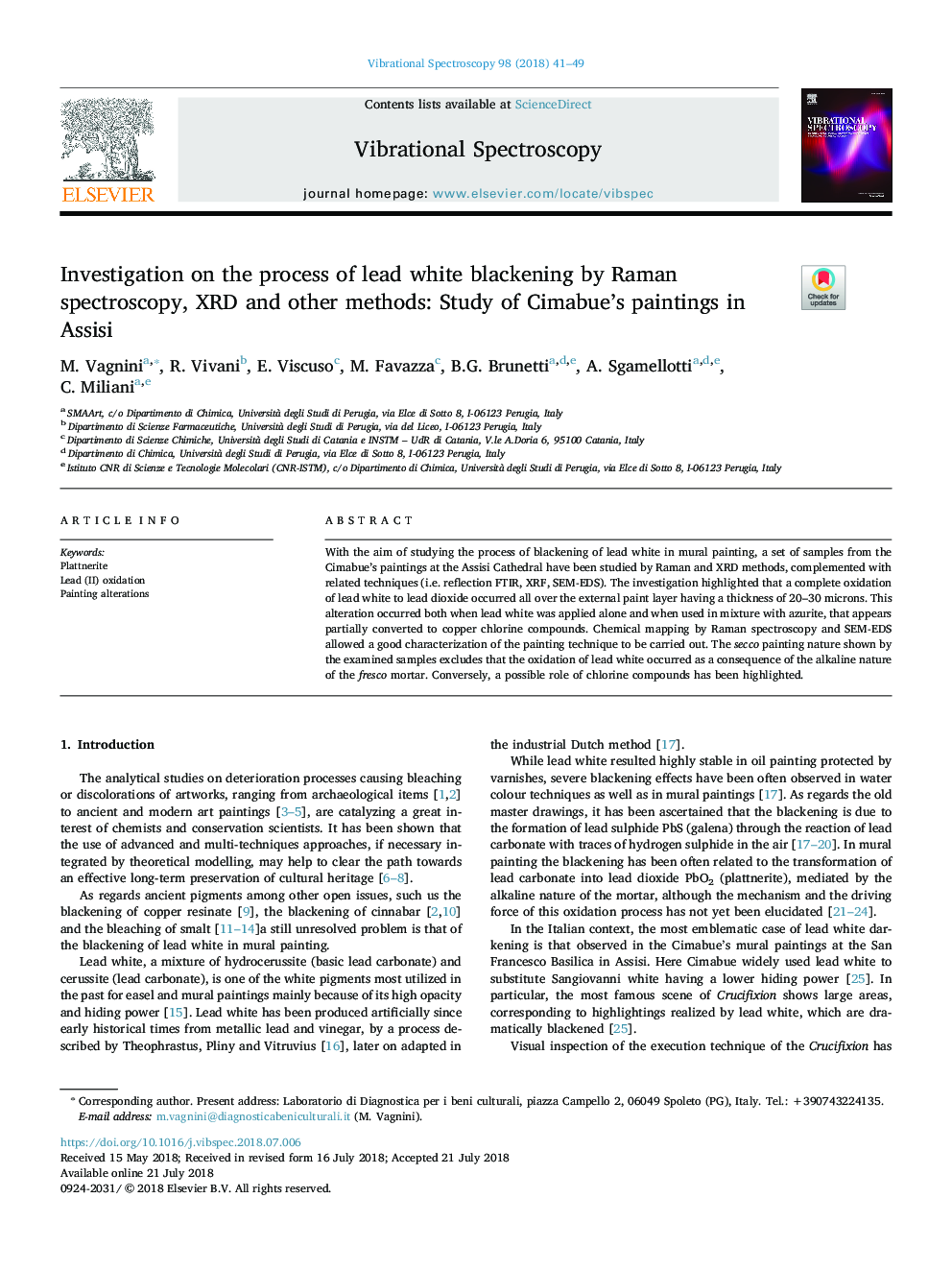| Article ID | Journal | Published Year | Pages | File Type |
|---|---|---|---|---|
| 7690519 | Vibrational Spectroscopy | 2018 | 9 Pages |
Abstract
With the aim of studying the process of blackening of lead white in mural painting, a set of samples from the Cimabue's paintings at the Assisi Cathedral have been studied by Raman and XRD methods, complemented with related techniques (i.e. reflection FTIR, XRF, SEM-EDS). The investigation highlighted that a complete oxidation of lead white to lead dioxide occurred all over the external paint layer having a thickness of 20-30 microns. This alteration occurred both when lead white was applied alone and when used in mixture with azurite, that appears partially converted to copper chlorine compounds. Chemical mapping by Raman spectroscopy and SEM-EDS allowed a good characterization of the painting technique to be carried out. The secco painting nature shown by the examined samples excludes that the oxidation of lead white occurred as a consequence of the alkaline nature of the fresco mortar. Conversely, a possible role of chlorine compounds has been highlighted.
Related Topics
Physical Sciences and Engineering
Chemistry
Analytical Chemistry
Authors
M. Vagnini, R. Vivani, E. Viscuso, M. Favazza, B.G. Brunetti, A. Sgamellotti, C. Miliani,
